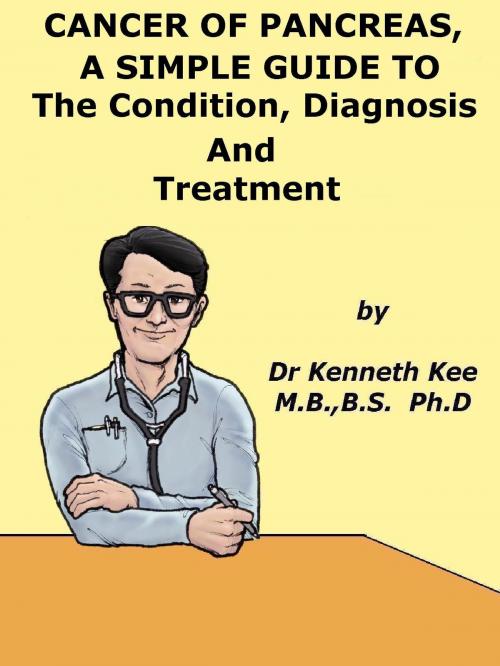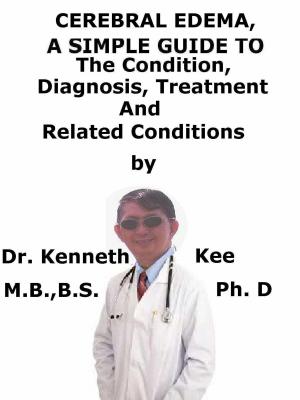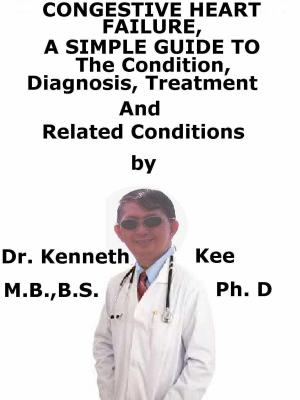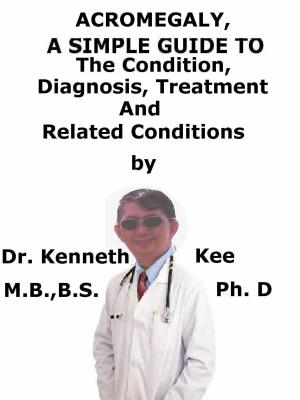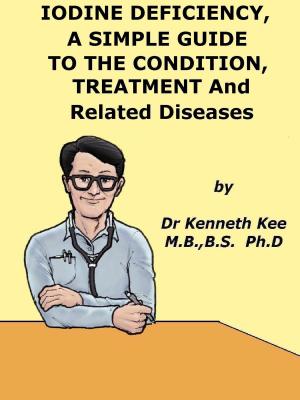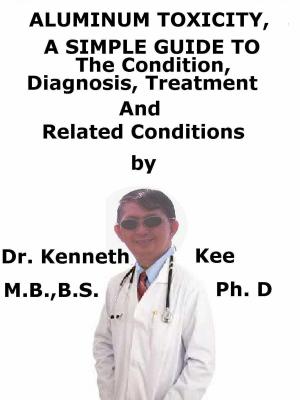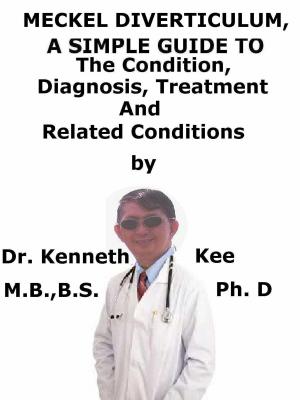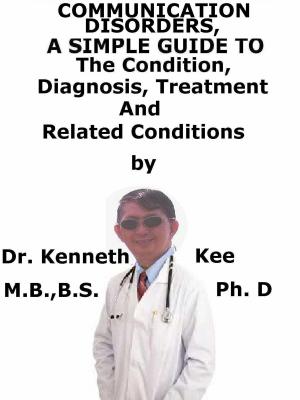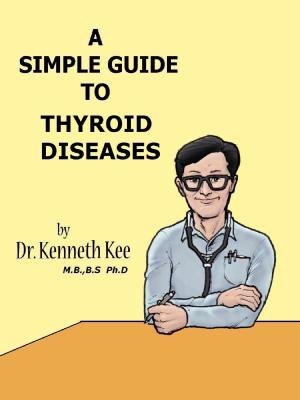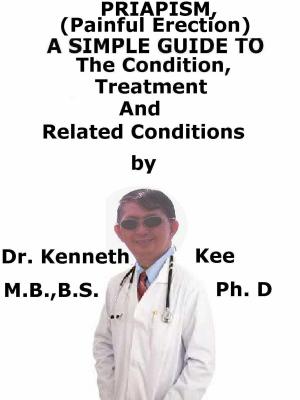Cancer of Pancreas, A Simple Guide To The Condition, Diagnosis And Treatment
Nonfiction, Health & Well Being, Health, Ailments & Diseases, Abdominal, Cancer| Author: | Kenneth Kee | ISBN: | 9781311316400 |
| Publisher: | Kenneth Kee | Publication: | September 21, 2015 |
| Imprint: | Smashwords Edition | Language: | English |
| Author: | Kenneth Kee |
| ISBN: | 9781311316400 |
| Publisher: | Kenneth Kee |
| Publication: | September 21, 2015 |
| Imprint: | Smashwords Edition |
| Language: | English |
Pancreatic Cancer
A 70 year patient of mine had chronic gastric pains for many years which improved with medications.
I have always advised him to see a specialist for a gastroscopy.
Eventually he went and the gastroscopy did show the presence of gastric ulcers and the bacterium Helicobacter pylori.
With treatment of the gastric ulcer and bacteria, further gastroscopy showed that the stomach was clear of ulcers and bacteria.
However the pain persisted.
So he went to see all the specialists in Singapore, America, Europe and United Kingdom.
All the tests did not showed any serious illness.
As the pain became worse, a MRI of the pancreas finally confirmed the presence of Cancer of the Pancreas.
By that time the cancer had spread to the liver and other parts of the body.
Treatment was only palliative.
Although a multimillionaire all his money could not get him a recovery and he finally succumbed to his illness.
Cancer of the Pancreas is one of the difficult cancers to detect and cure
One other example is the late Steve Jobs who died of pancreatic cancer.
What is Pancreatic Cancer?
Pancreatic Cancer is a malignant disease of the exocrine pancreas.90% are adenocarcinomas.
What are the causes of Pancreatic Cancer?
1. Smoking. cigarettes smoke chemicals has been known to damage the pancreatic cells
2. Diets rich in red meat- high protein tends to stimulate more enzymes from pancreas and cause dysfunction in the cells
3. Diabetes mellitus -damage to islets in pancreas may contribute to pancreatic cancer
4. Chronic pancreatitis has been found to have some causal effect.
5. Helicobacter pylori infection -known to cause stomach cancer and also pancreatic cancer
6. Occupational exposure to certain chemicals including insecticides
7. Family history -there is a family history in 5-10% of pancreatic cancer patients
8. Obesity - the high fat diet may induce more disease of bile system with blockage of its tract.
What are the symptoms and signs of Pancreatic Cancer?
Symptoms are non-specific and varied.
1. Pain in the upper abdomen that typically radiates to the back.
2. Pain relieved by leaning forward
3. Painless jaundice related to bile duct obstruction (carcinoma of the head of the pancreas)
4. Depression is sometimes associated with pancreatic cancer
Signs:
1. Tenderness in upper abdomen
2. Mass in the abdomen
3. Trousseau sign
Spontaneous blood clots in veins of extremities or the superficial veins may indicate presence of pancreatic cancer
How is the Diagnosis of Pancreatic Cancer made?
Diagnosis can usually be made by:
1. Pain in upper abdomen radiating straight to the back, worse on eating
2. Weight loss severe with anorexia, early satiety, diarrhea, or steatorrhea
3. Jaundice - initially painless, itchy with dark urine
Painful jaundice occurs later
4. Onset of atypical diabetes mellitus
5. Unexplained recent thrombophlebitis
6. Past history of pancreatitis
7. Location of cancer
a. Tumors in the pancreatic body or tail usually present with pain and weight loss
b. Tumors in the head of the gland typically present with steatorrhea, weight loss, and jaundice
8. Courvoisier sign presence of jaundice and a painlessly distended gallbladder is suggestive of pancreatic cancer
9. Liver function tests (LFT)
LFT may show a combination of results indicative of bile duct obstruction (raised conjugated bilirubin, SGGT and alkaline phosphatase levels)
10. Blood CA19-9 (carbohydrate antigen 19.9)
11. Endoscopic ultrasound (EUS) is another procedure that can help visualize the tumor and obtain tissue to establish the diagnosis.
Pancreatic Cancer
A 70 year patient of mine had chronic gastric pains for many years which improved with medications.
I have always advised him to see a specialist for a gastroscopy.
Eventually he went and the gastroscopy did show the presence of gastric ulcers and the bacterium Helicobacter pylori.
With treatment of the gastric ulcer and bacteria, further gastroscopy showed that the stomach was clear of ulcers and bacteria.
However the pain persisted.
So he went to see all the specialists in Singapore, America, Europe and United Kingdom.
All the tests did not showed any serious illness.
As the pain became worse, a MRI of the pancreas finally confirmed the presence of Cancer of the Pancreas.
By that time the cancer had spread to the liver and other parts of the body.
Treatment was only palliative.
Although a multimillionaire all his money could not get him a recovery and he finally succumbed to his illness.
Cancer of the Pancreas is one of the difficult cancers to detect and cure
One other example is the late Steve Jobs who died of pancreatic cancer.
What is Pancreatic Cancer?
Pancreatic Cancer is a malignant disease of the exocrine pancreas.90% are adenocarcinomas.
What are the causes of Pancreatic Cancer?
1. Smoking. cigarettes smoke chemicals has been known to damage the pancreatic cells
2. Diets rich in red meat- high protein tends to stimulate more enzymes from pancreas and cause dysfunction in the cells
3. Diabetes mellitus -damage to islets in pancreas may contribute to pancreatic cancer
4. Chronic pancreatitis has been found to have some causal effect.
5. Helicobacter pylori infection -known to cause stomach cancer and also pancreatic cancer
6. Occupational exposure to certain chemicals including insecticides
7. Family history -there is a family history in 5-10% of pancreatic cancer patients
8. Obesity - the high fat diet may induce more disease of bile system with blockage of its tract.
What are the symptoms and signs of Pancreatic Cancer?
Symptoms are non-specific and varied.
1. Pain in the upper abdomen that typically radiates to the back.
2. Pain relieved by leaning forward
3. Painless jaundice related to bile duct obstruction (carcinoma of the head of the pancreas)
4. Depression is sometimes associated with pancreatic cancer
Signs:
1. Tenderness in upper abdomen
2. Mass in the abdomen
3. Trousseau sign
Spontaneous blood clots in veins of extremities or the superficial veins may indicate presence of pancreatic cancer
How is the Diagnosis of Pancreatic Cancer made?
Diagnosis can usually be made by:
1. Pain in upper abdomen radiating straight to the back, worse on eating
2. Weight loss severe with anorexia, early satiety, diarrhea, or steatorrhea
3. Jaundice - initially painless, itchy with dark urine
Painful jaundice occurs later
4. Onset of atypical diabetes mellitus
5. Unexplained recent thrombophlebitis
6. Past history of pancreatitis
7. Location of cancer
a. Tumors in the pancreatic body or tail usually present with pain and weight loss
b. Tumors in the head of the gland typically present with steatorrhea, weight loss, and jaundice
8. Courvoisier sign presence of jaundice and a painlessly distended gallbladder is suggestive of pancreatic cancer
9. Liver function tests (LFT)
LFT may show a combination of results indicative of bile duct obstruction (raised conjugated bilirubin, SGGT and alkaline phosphatase levels)
10. Blood CA19-9 (carbohydrate antigen 19.9)
11. Endoscopic ultrasound (EUS) is another procedure that can help visualize the tumor and obtain tissue to establish the diagnosis.
